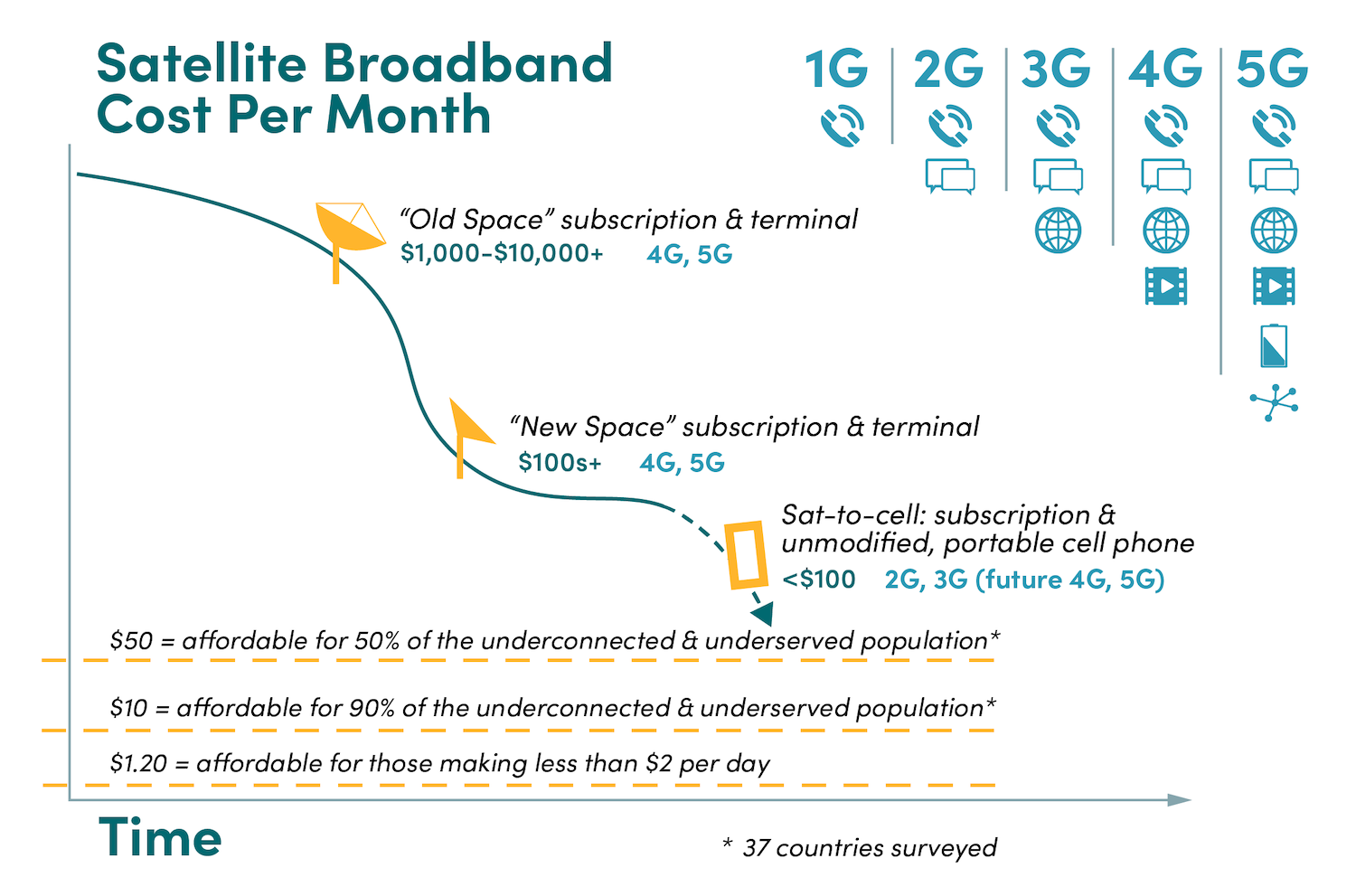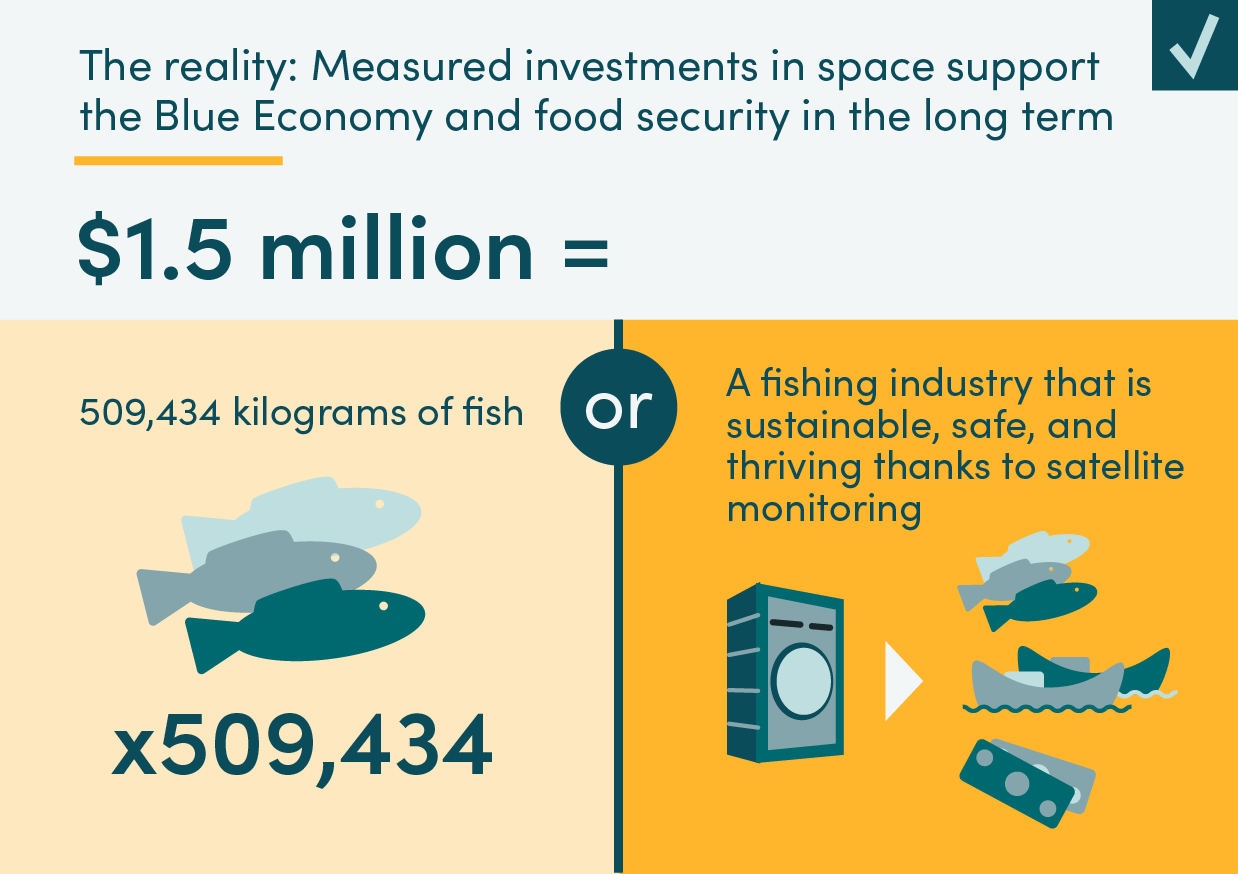Recommended
In a recent note, I urged governments and aid and development finance agencies to prepare for more affordable space-based telecommunications that will make access to “last mile” connectivity cheaper, if not yet affordable, in underserved, remote, sparsely populated, dangerous, or otherwise difficult locations. Considering fixed and mobile broadband costs ticked up during the COVID pandemic, it’s become all the more important to find new ways to reach unconnected and underserved populations.
The trend toward space-enabled affordability moved a notch forward last week when T-Mobile and SpaceX announced their alliance to provide “satellite to cell phone” service (in the US), joining the ranks of other New Space and telecommunications alliances, such as Lynk and Unitel (Mongolia) and Telikom (Papua New Guinea, Solomon Islands), and AST and Smart Communications (Philippines). SpaceX and T-Mobile are multi-billion-dollar companies with global name recognition. Their pursuit of this technology will likely foster confidence in it, and therefore accelerate its arrival in the US and abroad.
Research in 37 countries[1] shows that internet access becomes affordable for about 50 percent of the unconnected and underserved population when the total data and hardware cost is less than $50 per month (assuming a basic 1Gb/month service). When less than $10 per month, it becomes affordable for about 90 percent of the unconnected and underserved population in these countries. Where people make less than $2 per day, a monthly internet bill would need to drop further, below $1.20, to meet the UN standard for “affordable internet.”
Satellite-to-cell phone technology is on track to push basic connectivity below these thresholds. It enables users to shed the need for satellite-specific hardware ($600+ for a satellite terminal and steady electricity) and know-how (basic computer skills) in favor of a locally purchased cell phone and mobile service plan. The cell phone would send and receive signals with both familiar Earth-bound cell towers and “cell towers in the sky” satellites. Other options, like pseudo-satellites (high-altitude drones and balloons) are also jostling to extend connectivity and bandwidth beyond the edge of traditional, cable, fiber and microwave ground-based “last mile” telecommunications infrastructure.

Looking a bit closer at the T-Mobile/SpaceX alliance, T-Mobile’s cheapest plan (as advertised in the US) is $60 per month, plus a to-be-determined monthly fee for "satellite to cell phone" low-bandwidth service. T-Mobile and SpaceX are clearly focused on high-income-country (US) customers at this point. AST and Lynk, meanwhile, are working with various telecommunication companies in low- and middle-income countries that routinely sell data in smaller, more affordable “chunks,” as well as subscriptions. Mongolia’s Unitel, for example, sells 1Gb of data for $.50 good for 24 hours, or a daily allotment of 512mb for about $8 per month. 1Gb is enough data for thousands of texts or emails, but only modest streaming (2 hours) and web browsing (12 hours).
Satellite-to-cellphone providers are limited to “store and forward” texts for now due to the small number of in-orbit satellites today. “Store and forward” means a user’s cell phone would send data to a satellite as it passes overhead, whereupon the satellite would “store” it onboard for a short time, and then “forward” it to an Earth-based receiver (and the rest of the internet) at its first opportunity. As more satellites are launched, and are able relay users’ data more rapidly, satellite-to-cell phone companies plan to offer low-bandwidth internet access, and then, eventually, full 5G connectivity. For now, satellite-to-cell phone technology is poised to improve affordable access to (limited) satellite broadband but isn’t able to meet demand for full 5G connectivity. The SpaceX and T-Mobile joint venture puts significant resources into deploying satellite-to-cellphone technology, adding momentum to a future with increasingly accessible and affordable internet access.
To help realize a future with more affordable internet access for all, governments and aid agencies should take the following steps:
Governments should consider, and even actively encourage, emerging commercial options like satellite-to-cell phone technology, to pragmatically close remaining broadband access gaps. Now is the time to ensure domestic licensing regimes are clearly written, discoverable, and up to date (authority to operate and use certain radiofrequencies). Governments should participate in their regional telecommunication organization and be proactive in developing policy and regulations that emphasize the importance of affordable telecom services, particularly as these organizations are in the process of establishing standards for cell phone to satellite technology.
Bilateral and multilateral aid and development finance agencies should consider satellites as a viable option when advising partners regarding telecommunications infrastructure. As more satellite companies become operational, it will be increasingly important to champion transparency from all actors on system capabilities, cost, and best practices—particularly in the establishment of and encouragement to follow regulations and licensing. Development agencies should increase understanding and use of space capabilities as an “enabling” infrastructure.
[1]Countries studied include Afghanistan, Argentina, Bangladesh, Burkina Faso, Brazil, Democratic Republic of Congo, Cote d’Ivoire, Cameroon, Algeria, Egypt, Ethiopia, Ghana, Haiti, Indonesia, India, Kenya, Sri Lanka, Lesotho, Myanmar, Malawi, Mexico, Malaysia, Mozambique, Nigeria, Peru, Papua New Guinea, Philippines, Pakistan, Rwanda, Sudan, Thailand, Turkey, Tanzania, Ukraine, Uganda, South Africa, Zambia.
Disclaimer
CGD blog posts reflect the views of the authors, drawing on prior research and experience in their areas of expertise. CGD is a nonpartisan, independent organization and does not take institutional positions.






